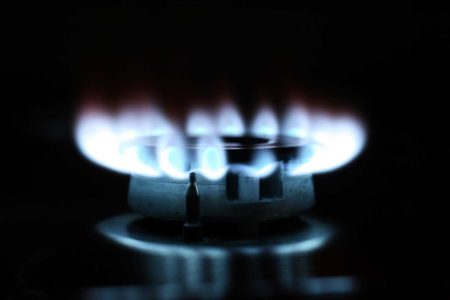 Designing a gasket, selecting your gasket material and sealing your joint sounds like it should be a relatively straightforward thing to do. A lot of times, it can be. However, throw a high-temp application into the equation, and things can become a bit more challenging. High temperatures have an effect on how certain materials behave, and you can’t treat these materials and applications the same as everything else.
Designing a gasket, selecting your gasket material and sealing your joint sounds like it should be a relatively straightforward thing to do. A lot of times, it can be. However, throw a high-temp application into the equation, and things can become a bit more challenging. High temperatures have an effect on how certain materials behave, and you can’t treat these materials and applications the same as everything else.
Once you really understand how to deal with high-temperature applications and what you need to know to start the process of selecting the right material for these applications, you’ve won half the battle.
High Temperatures? No Worries.
Here are a few tips and items of note that will get you moving in the right direction.
1. What should I pay attention to when adding heat?
Watch the temperatures at the flange, and what happens to gasket materials when they reach that level. Seeing what happens will help you to identify your needs going forward. If you are working with your gasket material supplier, they will definitely want to know what types of things you are seeing so they can make a recommendation for you.
2. Are there certain materials I should gravitate towards when dealing with high heat?
Some materials are designed for heat, they contain materials resistant to thermal degradation, such as graphites, vermiculites, micas, and other filler materials. Generally, high-temp gasket materials should focus with this basis.
3. Are there certain materials I should stay away from?
Elastomers should be avoided with high heat. They will tend to get brittle and degrade quickly, leading to shrinkage and ultimately leakage.
4. What about oxidation?
Oxidation (thermal degradation) is the issue in high heat joints. Materials may not “burn” but they can degrade. Gasket materials must be chosen to withstand oxidation at operating temperatures. Graphites, for example, can have a wide range of oxidation resistance (or lack of) and should be chosen carefully. (Your gasket material supplier should have some choices for you. For example, MTI offers a variety of materials for exhaust materials with various levels of oxidation resistance.)
5. What about protection?
Protection is another issue. Using Armor-cladding is one way to protect the sealing layer, by sandwiching it between steel layers. This also provides scrubbing resistance which is also a factor in hot joints. Another form of protection is a flange ring, installed to create the primary seal and also protect the body of the gasket from the passing high-temperature gases.
6. What about aging?
Aging is another issue relative to heat. At extreme temperatures, graphite for example, can age and oxidize. (MTI offers anti-oxidant graphite formulations to address this, providing up to 3X the service life of “regular” graphite in the same applications. It’s something to consider!)
Bring On The Heat!
Even though high-temp applications require their own set of considerations, there are solutions that work. Be sure to talk with your trusted gasket material supplier if you have any questions about using the right material for your application. If you have a material that works “just ok”, we encourage you to see what else is out there. There are some great materials on the market that do very well in high-temp applications.
What sealing issues do you see in your high-temp applications? If you are interested in subscribing to Sealed-In’s blog posts, email sales@mtigasket.com.

Designing a gasket, selecting your gasket material and sealing your joint sounds like it should be a relatively straightforward thing to do. A lot of times, it can be. However, throw a high-temp application into the equation, and things can become a bit more challenging. High temperatures have an effect on how certain materials behave, and you can’t treat these materials and applications the same as everything else.
Once you really understand how to deal with high-temperature applications and what you need to know to start the process of selecting the right material for these applications, you’ve won half the battle.
High Temperatures? No Worries.
Here are a few tips and items of note that will get you moving in the right direction.
1. What should I pay attention to when adding heat?
Watch the temperatures at the flange, and what happens to gasket materials when they reach that level. Seeing what happens will help you to identify your needs going forward. If you are working with your gasket material supplier, they will definitely want to know what types of things you are seeing so they can make a recommendation for you.
2. Are there certain materials I should gravitate towards when dealing with high heat?
Some materials are designed for heat, they contain materials resistant to thermal degradation, such as graphites, vermiculites, micas, and other filler materials. Generally, high-temp gasket materials should focus with this basis.
3. Are there certain materials I should stay away from?
Elastomers should be avoided with high heat. They will tend to get brittle and degrade quickly, leading to shrinkage and ultimately leakage.
4. What about oxidation?
Oxidation (thermal degradation) is the issue in high heat joints. Materials may not “burn” but they can degrade. Gasket materials must be chosen to withstand oxidation at operating temperatures. Graphites, for example, can have a wide range of oxidation resistance (or lack of) and should be chosen carefully. (Your gasket material supplier should have some choices for you. For example, MTI offers a variety of materials for exhaust materials with various levels of oxidation resistance.)
5. What about protection?
Protection is another issue. Using Armor-cladding is one way to protect the sealing layer, by sandwiching it between steel layers. This also provides scrubbing resistance which is also a factor in hot joints. Another form of protection is a flange ring, installed to create the primary seal and also protect the body of the gasket from the passing high-temperature gases.
6. What about aging?
Aging is another issue relative to heat. At extreme temperatures, graphite for example, can age and oxidize. (MTI offers anti-oxidant graphite formulations to address this, providing up to 3X the service life of “regular” graphite in the same applications. It’s something to consider!)
Bring On The Heat!
Even though high-temp applications require their own set of considerations, there are solutions that work. Be sure to talk with your trusted gasket material supplier if you have any questions about using the right material for your application. If you have a material that works “just ok”, we encourage you to see what else is out there. There are some great materials on the market that do very well in high-temp applications.
What sealing issues do you see in your high-temp applications? If you are interested in subscribing to Sealed-In’s blog posts, email sales@mtigasket.com.

Designing a gasket, selecting your gasket material and sealing your joint sounds like it should be a relatively straightforward thing to do. A lot of times, it can be. However, throw a high-temp application into the equation, and things can become a bit more challenging. High temperatures have an effect on how certain materials behave, and you can’t treat these materials and applications the same as everything else.
Once you really understand how to deal with high-temperature applications and what you need to know to start the process of selecting the right material for these applications, you’ve won half the battle.
High Temperatures? No Worries.
Here are a few tips and items of note that will get you moving in the right direction.
1. What should I pay attention to when adding heat?
Watch the temperatures at the flange, and what happens to gasket materials when they reach that level. Seeing what happens will help you to identify your needs going forward. If you are working with your gasket material supplier, they will definitely want to know what types of things you are seeing so they can make a recommendation for you.
2. Are there certain materials I should gravitate towards when dealing with high heat?
Some materials are designed for heat, they contain materials resistant to thermal degradation, such as graphites, vermiculites, micas, and other filler materials. Generally, high-temp gasket materials should focus with this basis.
3. Are there certain materials I should stay away from?
Elastomers should be avoided with high heat. They will tend to get brittle and degrade quickly, leading to shrinkage and ultimately leakage.
4. What about oxidation?
Oxidation (thermal degradation) is the issue in high heat joints. Materials may not “burn” but they can degrade. Gasket materials must be chosen to withstand oxidation at operating temperatures. Graphites, for example, can have a wide range of oxidation resistance (or lack of) and should be chosen carefully. (Your gasket material supplier should have some choices for you. For example, MTI offers a variety of materials for exhaust materials with various levels of oxidation resistance.)
5. What about protection?
Protection is another issue. Using Armor-cladding is one way to protect the sealing layer, by sandwiching it between steel layers. This also provides scrubbing resistance which is also a factor in hot joints. Another form of protection is a flange ring, installed to create the primary seal and also protect the body of the gasket from the passing high-temperature gases.
6. What about aging?
Aging is another issue relative to heat. At extreme temperatures, graphite for example, can age and oxidize. (MTI offers anti-oxidant graphite formulations to address this, providing up to 3X the service life of “regular” graphite in the same applications. It’s something to consider!)
Bring On The Heat!
Even though high-temp applications require their own set of considerations, there are solutions that work. Be sure to talk with your trusted gasket material supplier if you have any questions about using the right material for your application. If you have a material that works “just ok”, we encourage you to see what else is out there. There are some great materials on the market that do very well in high-temp applications.
What sealing issues do you see in your high-temp applications? If you are interested in subscribing to Sealed-In’s blog posts, email sales@mtigasket.com.
